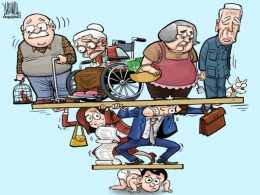The COVID-19 pandemic has undoubtedly left an indelible mark on virtually every aspect of our lives. From health and the economy to education and travel, no industry has been immune to its effects. One sector that has experienced significant upheaval is the real estate industry. In this article, we will delve into the impact of COVID-19 on the real estate market, exploring the challenges faced by industry stakeholders and the innovative strategies employed to adapt and survive during these unprecedented times.
- The Initial Shock: As the pandemic took hold in early 2020, the real estate industry experienced an immediate and sharp downturn. Social distancing measures, economic uncertainty, and restricted mobility led to a slump in property sales, construction projects, and rental activities. The residential and commercial sectors faced unique challenges, with homeowners hesitant to list their properties and businesses grappling with the shift to remote work.
- Virtual Solutions and Digital Transformation: In the face of adversity, the real estate industry swiftly embraced technology to mitigate the effects of the pandemic. Virtual property tours, 3D imaging, and video conferencing became the norm, enabling prospective buyers and tenants to explore properties remotely. Real estate agents and brokers quickly adapted their practices, leveraging digital platforms and online marketplaces to showcase and transact properties. This digital transformation not only facilitated continuity during lockdowns but also paved the way for long-term changes in the industry.
- Changing Dynamics and Demand Patterns: COVID-19 forced individuals and families to reevaluate their housing needs. With remote work becoming widespread, many urban dwellers sought larger homes in suburban or rural areas, leading to increased demand in those regions. Conversely, densely populated cities experienced a temporary exodus as residents sought refuge in less congested locations. This shift in demand patterns compelled real estate developers and investors to reevaluate their strategies and prioritize flexibility and adaptability in property design.
- Economic Fallout and Market Adjustments: The pandemic-induced economic downturn had profound implications for the real estate market. Job losses, business closures, and financial insecurity prompted a rise in mortgage delinquencies and a decrease in overall housing affordability. Governments and financial institutions implemented various support measures, including mortgage forbearance programs and low-interest rates, to alleviate the strain on homeowners and stimulate market activity. However, the long-term economic impact remains uncertain, making it crucial for real estate professionals to navigate market volatility cautiously.
- Resilience and Innovation: Despite the challenges, the real estate industry has demonstrated remarkable resilience and adaptability. Industry players have embraced creative solutions to overcome obstacles, such as repurposing commercial spaces into residential units or co-working environments. Real estate developers have incorporated health and wellness features into their projects, emphasizing air quality systems, touchless technology, and open green spaces. These innovations reflect a concerted effort to address the evolving needs and expectations of consumers in a post-pandemic world.
Conclusion: The COVID-19 pandemic has forced the real estate industry to confront unprecedented challenges while fostering innovation and transformation. From virtual solutions to changing demand dynamics, the industry has demonstrated remarkable resilience and adaptability. As the world recovers and adjusts to a new normal, the lessons learned during this crisis will undoubtedly shape the future of real estate, paving the way for a more tech-savvy, flexible, and sustainable industry.











